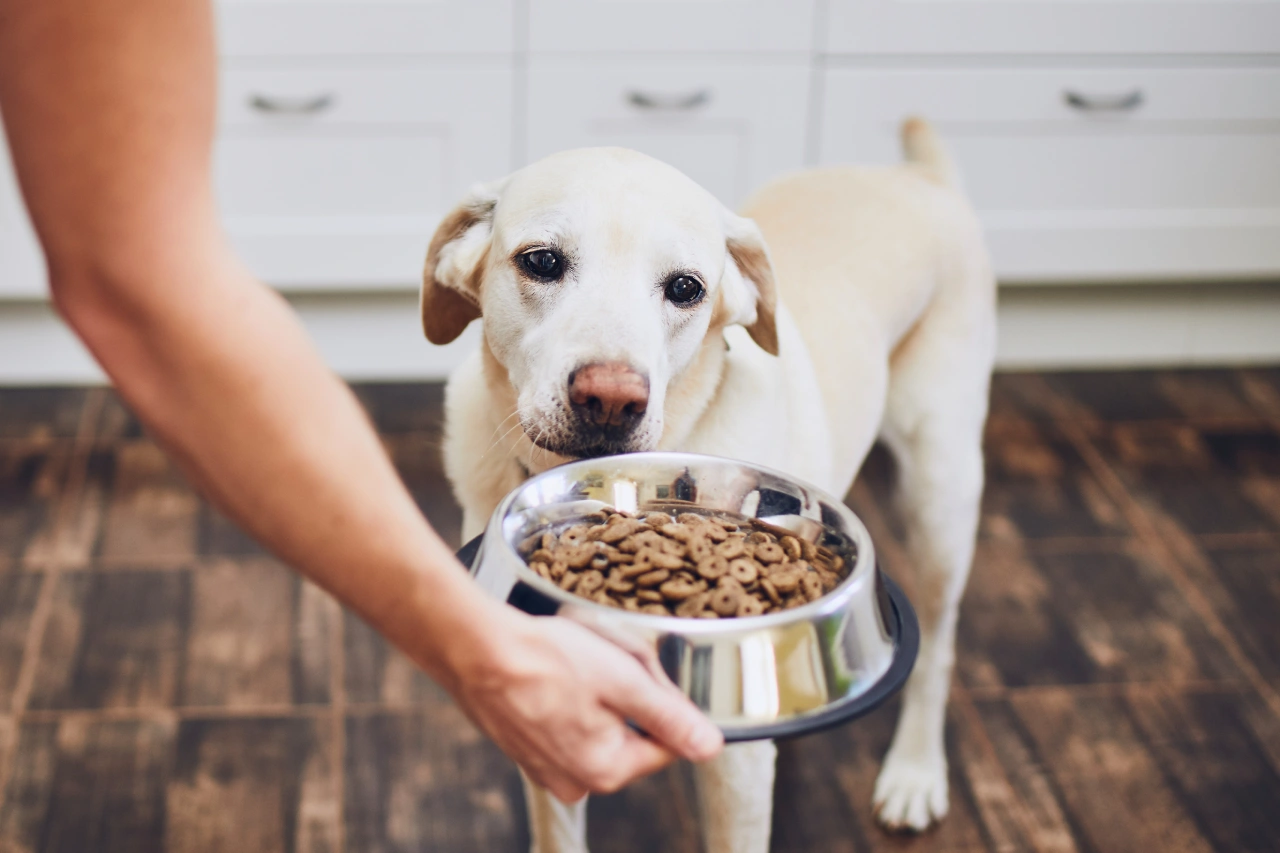As pet parents become increasingly conscious about what goes into their furry family members’ bowls, grain free limited ingredient dog food has emerged as a game-changing solution for dogs with sensitive stomachs, food allergies, and dietary restrictions. This specialized nutrition approach combines the benefits of grain-free formulas with the simplicity of limited ingredients, creating meals that are both gentle and nutritionally complete.
If you have been struggling to find the right food for your sensitive pup, or you are simply looking to provide cleaner, more sustainable nutrition, understanding grain free limited ingredient options can transform your dog’s health and happiness. Let’s explore everything you need to know about this revolutionary approach to canine nutrition.
Understanding Grain Free Limited Ingredient Dog Food
Grain free limited ingredient dog food represents a minimalist approach to canine nutrition that eliminates common allergens while focusing on high-quality, easily digestible ingredients. These formulas typically contain fewer than 10 main ingredients, making them ideal for dogs with food sensitivities, allergies, or digestive issues.
Unlike traditional dog foods that may contain dozens of ingredients, limited ingredient diets (LID) focus on single-source proteins and carbohydrates, reducing the likelihood of adverse reactions while maintaining nutritional completeness. When combined with grain-free formulations, these foods offer a clean, simple approach to feeding that many dogs thrive on.
Why Choose Grain Free Limited Ingredient Formulas?
Digestive Sensitivity Solutions
Many dogs struggle with grain sensitivities that manifest as digestive upset, skin irritation, or chronic ear infections. Grain free limited ingredient dog food eliminates common grain triggers like wheat, corn, and soy while reducing overall ingredient complexity, making digestion easier and more comfortable for sensitive pets.
Allergy Management
Food allergies in dogs are often caused by proteins they have been exposed to repeatedly over time. Limited ingredient formulas help identify and eliminate problematic ingredients while introducing novel proteins that dogs have not developed sensitivities to.
Cleaner Ingredient Lists
The limited ingredient approach means fewer fillers, artificial additives, and unnecessary components. This cleaner formulation aligns with eco-conscious pet parenting values and provides more transparent nutrition for your furry friend.
Weight Management Benefits
Many grain free limited ingredient dog food options are naturally lower in carbohydrates and higher in protein, which can support healthy weight management and lean muscle maintenance in dogs of all ages.
Key Ingredients in Quality Limited Ingredient Formulas
Single Source Proteins
The foundation of effective limited ingredient dog food is a high-quality, single-source protein. Common options include:
- Novel Proteins: Duck, venison, rabbit, and fish provide alternatives for dogs with chicken or beef sensitivities
- Traditional Proteins: High-quality chicken, beef, or lamb for dogs without known protein allergies
- Fish-Based Options: Salmon, whitefish, or sardines offer omega-3 fatty acids along with easily digestible protein
Alternative Carbohydrate Sources
Since these formulas eliminate grains, they rely on alternative carbohydrate sources that are often more digestible and less allergenic:
- Sweet Potatoes: Rich in fiber, vitamins, and natural sweetness dogs love
- Peas: Provide protein and fiber while being gentle on sensitive stomachs
- Lentils: Offer additional protein and fiber for sustained energy
- Tapioca: A grain-free starch source that’s easy to digest
Essential Fats and Oils
Quality grain free limited ingredient dog food includes carefully selected fats for coat health, brain function, and overall wellness. Look for ingredients like salmon oil, flaxseed, or chicken fat for optimal nutrition.
Minimal Additives
The best limited ingredient formulas keep additives to a minimum, focusing only on essential vitamins, minerals, and natural preservatives like mixed tocopherols (vitamin E).
Benefits of Grain Free Limited Ingredient Nutrition
Improved Digestive Health
Dogs with sensitive stomachs often experience dramatic improvements when switching to grain free limited ingredient dog food. Reduced ingredient complexity means fewer potential irritants and easier digestion, leading to firmer stools, reduced gas, and better nutrient absorption.
Enhanced Skin and Coat Condition
Many skin issues in dogs stem from food sensitivities. By eliminating common allergens and focusing on high-quality proteins and fats, limited ingredient diets often result in shinier coats, reduced itching, and healthier skin overall.
Increased Energy and Vitality
When dogs are n0t dealing with chronic digestive discomfort or allergic reactions, their energy levels often increase significantly. Many pet parents report increased playfulness and vitality after switching to limited ingredient formulas.
Better Long-Term Health Outcomes
Chronic inflammation from food sensitivities can impact overall health and longevity. Grain free limited ingredient dog food helps reduce this inflammation, potentially supporting better long-term health outcomes.

Identifying Dogs Who Benefit from Limited Ingredient Diets
Signs of Food Sensitivities
Several symptoms may indicate your dog would benefit from grain free limited ingredient dog food:
- Chronic digestive upset, including diarrhea or vomiting
- Excessive scratching, licking, or skin irritation
- Recurrent ear infections
- Chronic gas or bloating
- Dull coat or excessive shedding
- Lethargy or decreased appetite
Breeds Prone to Sensitivities
While any dog can develop food sensitivities, certain breeds are more predisposed:
- German Shepherds
- Golden Retrievers
- Labrador Retrievers
- Bulldogs
- Cocker Spaniels
- West Highland White Terriers
Life Stage Considerations
Puppies, senior dogs, and dogs with compromised immune systems may particularly benefit from the gentle, easily digestible nature of limited ingredient formulations.
Transitioning to Grain Free Limited Ingredient Food
Gradual Introduction Protocol
When switching to grain free limited ingredient dog food, follow a gradual transition over 7-10 days:
- Days 1-2: 75% current food, 25% new food
- Days 3-4: 50% current food, 50% new food
- Days 5-6: 25% current food, 75% new food
- Days 7+: 100% new food
Monitoring During Transition
Watch for positive changes like improved stool quality, reduced scratching, and increased energy. Some dogs may experience temporary digestive adjustment during the first few days.
Elimination Diet Approach
For dogs with suspected allergies, work with your veterinarian to implement a proper elimination diet using grain free limited ingredient dog food as the foundation.
Reading Labels and Choosing Quality Products
Ingredient List Priorities
When selecting grain free limited ingredient dog food, the ingredient list should be short and recognizable. Look for:
- Named meat or fish as the first ingredient
- Limited carbohydrate sources (ideally 1-2 types)
- Minimal additives and preservatives
- No artificial colors, flavors, or unnecessary fillers
Nutritional Adequacy Statements
Ensure any limited ingredient food meets AAFCO nutritional standards for your dog’s life stage. This guarantees the simplified formula still provides complete and balanced nutrition.
Protein and Fat Content
Quality grain free limited ingredient dog food typically contains 22-32% protein and 8-15% fat, depending on your dog’s activity level and life stage needs.
Avoid Common Pitfalls
Be wary of products that claim to be “limited ingredient” but still contain numerous additives, or those that use vague terms like “meat meal” without specifying the source.


Sustainable and Eco-Friendly Options
Environmentally Conscious Ingredients
Many grain free limited ingredient dog food brands now focus on sustainability by using:
- Sustainably sourced fish and seafood
- Free-range or grass-fed meat sources
- Organic vegetables and fruits
- Minimal packaging with recyclable materials
Supporting Responsible Brands
Choose companies that prioritize environmental responsibility, ethical sourcing, and transparent manufacturing processes. These values align with eco-conscious pet parenting while ensuring quality nutrition.
Local and Regional Options
Some regions offer locally produced grain free limited ingredient dog food that reduces transportation impact while supporting local economies.
Common Myths and Misconceptions
“Grain Free Means Carb Free”
This is false. Grain free limited ingredient dog food still contains carbohydrates from sources like sweet potatoes, peas, or lentils. These alternative carbs are often more digestible and less allergenic than grains.
“Limited Ingredient Means Less Nutritious”
Quality limited ingredient formulas are nutritionally complete and often more nutrient-dense than foods with numerous fillers and additives.
“All Dogs Need Grain Free Food”
While many dogs thrive on grain-free diets, not all dogs require them. The decision should be based on individual sensitivities and health needs.
“More Expensive Always Means Better”
Price doesn’t always indicate quality. Focus on ingredient quality, nutritional adequacy, and your dog’s individual response rather than price alone.
Working with Your Veterinarian
Professional Guidance
Before switching to grain free limited ingredient dog food, especially for suspected allergies or health issues, consult with your veterinarian. They can help determine if this approach is appropriate for your dog’s specific needs.
Monitoring Health Changes
Regular veterinary check-ups become even more important when making dietary changes. Your vet can monitor improvements in skin condition, digestive health, and overall wellness.
Blood Work and Testing
In some cases, your veterinarian may recommend allergy testing or blood work to identify specific sensitivities and guide food selection.
Cost Considerations and Value
Initial Investment vs. Long-term Savings
While grain free limited ingredient dog food often costs more upfront, many pet parents find long-term savings through reduced veterinary bills for allergy-related issues and improved overall health.
Portion Control Benefits
Higher quality nutrition often means better satiety and potentially smaller portion sizes, stretching your food budget further.
Health Investment
Consider the cost of quality nutrition as an investment in your dog’s long-term health and quality of life.
Storage and Freshness Tips
Proper Storage Methods
Maintain the quality of grain free limited ingredient dog food by:
- Storing in cool, dry locations away from direct sunlight
- Using airtight containers to preserve freshness
- Following “best by” dates and rotating stock appropriately
- Avoiding storage in garages or areas with temperature fluctuations
Portion Control
Limited ingredient foods are often more nutrient-dense, so follow feeding guidelines carefully and adjust portions based on your dog’s individual needs and body condition.

The Future of Limited Ingredient Nutrition
Innovation in Pet Food
The pet food industry continues evolving toward cleaner, simpler nutrition. Grain free limited ingredient dog food represents just the beginning of more transparent, health-focused pet nutrition approaches.
Personalized Nutrition
Emerging trends include customized limited ingredient formulas based on individual dogs’ genetic profiles, health histories, and specific sensitivities.
Sustainable Practices
Future developments will likely focus even more heavily on sustainable sourcing, eco-friendly packaging, and environmentally responsible manufacturing processes.
Frequently Asked Questions
Q: How long does it take to see improvements after switching to grain free limited ingredient dog food?
A: Most dogs show initial improvements within 2-4 weeks, with full benefits typically visible after 6-8 weeks of consistent feeding. Digestive improvements often appear first, followed by skin and coat changes.
Q: Can puppies eat grain free limited ingredient dog food?
Yes, but ensure the formula meets AAFCO standards for growth and development. Puppies have specific nutritional requirements, so choose a limited ingredient food specifically formulated for puppies or all life stages.
Q: Is grain free limited ingredient food suitable for senior dogs?
Absolutely! Senior dogs often benefit from easier-to-digest formulations. The simplified ingredient list can be gentler on aging digestive systems while still providing complete nutrition.
Q: How do I know if my dog is allergic to an ingredient in limited ingredient food?
Food allergies typically manifest as skin irritation, digestive upset, or ear infections. If symptoms persist or worsen after switching foods, consult your veterinarian for proper allergy testing and guidance.
Q: Can I mix different brands of grain free limited ingredient dog food?
While possible, it’s generally better to stick with one formula to maintain the benefits of limited ingredients. If you want to rotate proteins, choose different flavors from the same trusted brand to maintain consistency.
Final Thoughts
Grain free limited ingredient dog food represents a thoughtful approach to canine nutrition that prioritizes simplicity, digestibility, and quality. By eliminating common allergens and focusing on carefully selected ingredients, these formulas can transform the health and happiness of sensitive dogs while aligning with eco-conscious values.
The key to success lies in choosing high-quality products from reputable manufacturers, transitioning gradually, and monitoring your dog’s response carefully. While not every dog requires limited ingredient nutrition, those who benefit often experience dramatic improvements in digestive health, skin condition, and overall vitality.
As the pet food industry continues evolving toward more transparent, sustainable practices, grain free limited ingredient dog food sets the standard for clean, responsible pet nutrition. By making informed choices about what goes into your dog’s bowl, you are investing in their long-term health while supporting more ethical and environmentally conscious pet food practices.
Remember that every dog is unique, and what works for one may not work for another. The journey to finding the perfect nutrition for your furry friend may take time, but the results, a healthier, happier dog, make the effort worthwhile.
Citation
Kitchen, H. (2024, March 8). The Ultimate Guide to limited ingredient diets for dogs. The Honest Kitchen. https://www.thehonestkitchen.com/blogs/pet-food-ingredients/limited-ingredient-dog-food?srsltid=AfmBOopJf0m8b-oPO23oQZSpcTmNxUl8quDnRGIPDXZy1JJ2q6UKXsza
Ltd, W. (2020, November 16). The ultimate guide to grain free dog food. Beco. https://www.becopets.com/blogs/news/the-ultimate-guide-to-grain-free-dog-food?srsltid=AfmBOopOGxlgC_PpeByviZPluhsZDHJEO8Fzf_UtcFuHsBdFczCchPRs
Gliozzo, R. (2024, January 10). Grain-Free Dog Food: The guide to nutrition for your pup. Waggel. https://www.waggel.co.uk/blog/post/grain-free-dog-food-guide

